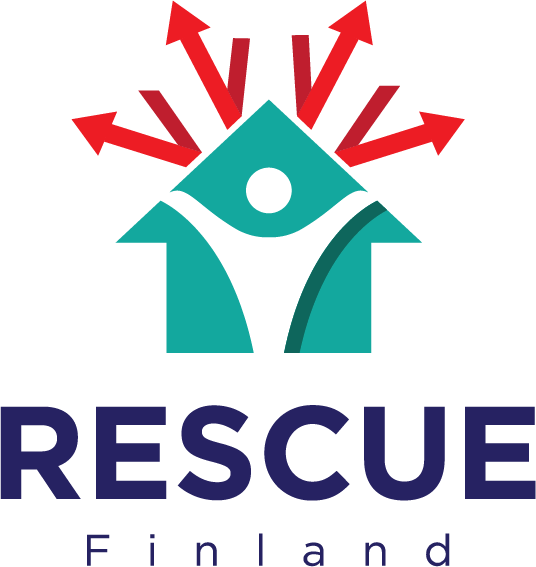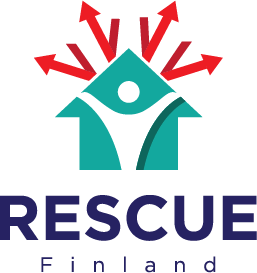Transformed Hybrid Spaces for Hybrid Futures – Pitfalls and Promises
March 10, 2022 . Written By Sirkka HeinonenPhoto by Sirkka Heinonen
In our urban environments, the built infrastructure harbours various kinds of architectural and functional spaces. Let us first look at the phenomenon of hybridisation in society. What it is, where it came from and what it can do to the wellbeing of people and cities. Then let us turn our gaze at the specific facet of hybridisation in the form of hybrid spaces – space with multi-use and functions, or combinations with various structures, shapes and substances. Our interest is to probe whether hybrid spaces can increase the resilience of cities in various crises and catastrophes, or whether there are resilience gaps where the very manifestation of hybrid spaces makes them vulnerable or even detrimental.
What is hybridisation?
Hybridisation is not just a recent phenomenon, it is age-old, like the Latin saying says ‘Nihil novi sub sole’ i.e. nothing new under the sun. However, hybridization is emerging now in a new costume and context. Hybridisation means combinations and fusion, and accordingly growing ambiguity i.e. opaqueness and a plethora of interpretations. It dates back to Greek mythology, as ancient powerful beasts such as Hydra, and to biology, with "mixed creatures". For example, the Sphinx is a mythical creature with the head of a human and the body of a lion with the wings of a falcon, usually, guardians of temple entrances.
Photo by Sirkka Heinonen
Hybridisation increasingly combines and fuses things, aspects, elements and actors, blurring our understanding of society. It makes one element of the VUCA world – ambiguity – to stand out as worth studying in more detail. The contemporary ‘VUCA’ world (volatility, uncertainty, complexity, and ambiguity), is fertile soil for risks and crises (Kaivo-oja & Laureaus 2018).
There is a connection between hybridization and crises. In our RESCUE project, there have been more than 130 risks or crises with direct and indirect impacts identified. We are moving at a fast speed from Ulrich Beck’s Risk Society (1992) to Crisis society. William Halal, in his recent book ‘Beyond Knowledge – how technology is driving an age of consciousness’, is describing the growing calamities such as floods, fires, superstorms, biodiversity losses, species extinctions, zoonotic viruses and the COVID-19 pandemic as Nature’s current lessons and feedback to assist our cognitive and spiritual development. He anticipates that the crises are hopefully driving humankind closer to the age of consciousness. So we should learn from crises even before they evolve into mega-crises. Learning from crises means the capacity to anticipate, identify, alleviate or even prevent them, and then in crises to cope with them, respond to them, and come out as renewed out of them – i.e. crises awareness with futures resilience. From the current COVID-19 pandemic alone, there is much to learn collectively and individually (Karjalainen et al. 2022). Crisis awareness should be a more eminent part of Futures Literacy (Toivonen et al. 2021). We should also learn about hybridization and its implications.
Our complex world is living amidst mega-challenges, bombarded with mega-crises. Global challenges, such as climate change and loss of biodiversity urgently need major responses. Other challenges bring about opportunities and risks, such as Artificial Intelligence (AI). Mega-crises can emerge from unexpected events, such as the COVID-19 pandemic. Blinded by the conundrum of mega-challenges and mega-crises, the role of hybridisation has been overlooked, as a lever for emerging futures. Mega-crises can also arise from forgotten risks such as nuclear war, warned by Toby Ord (2021) and made tragically topical by the Russian aggressor of the Ukrainian war.
‘Hybrid’ is interpreted somewhat differently in different fields. ‘Hybridity’, ‘hybridisation’, ‘hybridism’ or ‘hybrid’ are terms used by scholars in the social sciences as well as literary and cultural studies. Colloquially, we have hybrid TVs (analogue + digital), hybrid cars (electronic + fuel), hybrid work (home + office), and hybrid conferences (face-to-face + online). The COVID-19 pandemic propelled hybrid strategies (testing, tracking, isolating, curing, and keeping society functioning). Hybrid warfare blends conventional warfare, irregular, asymmetric and cyberwarfare with influences, such as fake news, and foreign interference. It seems evident that we are heading for ‘hybrid futures’.
One spatial strategy in the pandemic is to provide ‘bubble spaces’ – places where people can enjoy restaurants and cafés in their own small company, protected from contagion. Such bubbles are a reminder of a grander scale architectural design of a geodesic dome by the visionary Buckminster Fuller. Pandemic-free bubbles might, for example, be used in the future to cover whole city areas to protect from air-borne diseases. The geodesic domes are able to withstand very heavy loads for their size. Perhaps their structure would have other benefits as well in case of other planetary challenges, e.g. acid rain or biochemical attacks. In construction, a modern design for a quarantine room inside homes is already available. If new pandemics emerge, this may become a standard housing feature for all new buildings, and instructions for converting a normal room into a quarantine room will abound, too.
photo by Maria Lehtimäki
For office space, the pandemic generated several solutions. After lock-downs, you do not have to have a dedicated home office. There’s a self-contained quite plain styled Shell Office available for privacy and protection. It can also be used at offices to reduce virus transmission.
Photo by Dizz Concept
Hybridity refers to processes in which social practices that existed in separate ways, combine to generate new structures, objects, and practices in which such elements mix. In futures studies, the topic of hybridisation draws attention to change and to the meaning of change. It is a multidisciplinary subject, with multiple interpretations and alternative outcomes. Can change be anticipated better through analysing hybridisation, and does hybridisation accelerate or hinder change? Hybridisation reveals the dynamic nature of multiple phenomena. In architecture, a more focused definition is often used when talking about hybrid spaces, e.g. as multi-use of spaces in renewal or retrofitting. In the following, a broader stand is taken on hybrid spaces as almost any combinations that have an impact on the use of the spaces. One could almost wonder is there any urban space that is not hybrid space when using this wider scope?
What are Hybrid spaces - a tentative categorisation
A hybrid space can be based on many combinations, constituted of anything and of elements of very different scales or nature. As combinations of two or more things, hybrid spaces can tentatively be categorised according to their 1) characteristics, 2) fields, 3) functions, and 4) roles. The presented combinatory elements, as examples, are naturally not exhaustive.
Table 1. Four categories of hybrid spaces or hybrids as a typology (Heinonen et al., 2021).
Image by Katja Makkonen & Maiju Kolisoja
For example, in Madrid, Spain, there is a combination of two functions: a railway station plus a botanical garden. Where is the borderline? Or is there any? Perhaps some people visit it just for the garden. Perhaps some travellers enjoy the greenery as a greatly enhanced travel experience, whereas others may indifferently pass through it.
Photo by green rosa menkman.
In the following photo from Dubai Expo, people visit the exhibition while immersing themselves into views from future urban imageries. They may have it as a futures learning platform for what could be in future cities or what should be and what is missing there. Or they could use the space as a pure entertaining experience.
Photo by Sirkka Heinonen
Some cases for critical evaluation
Hybrid spaces – both existing and imagined – may nudge us towards solutions to global challenges and even promote futures resilience, especially in times of crises. We can critically take any hybrid space and evaluate it with a view to urban security and resilience in times of crises of whatever type. One example for our evaluation (Heinonen et al. 2021) is OODI Library, opened in 2018 in Helsinki, Finland. It is a hybrid space featuring a city library + public living room + maker space. This highly versatile building in ample space, promises to open a ‘living room’ for citizens and guests, a catalyst for social wellbeing and equality. Could it accommodate vulnerable people in times of another sudden crisis? On the other hand, could the openness as such bring along hazards, for example the pitfall of attracting misuse of the premises for harmful activities?
Photo by Kuvio
During the heatwaves in Europe last summer, some stores let people stay overnight in air-conditioned spaces. This rescued them from the heat and its pressing health impacts, but was the safety of in-staying people wholly guaranteed?
Another example for evaluation is Bosco Verticale, a city quarter in Milan, Italy. It is claimed to be a classic example of green ecological construction, literally a hybrid of forest (it. bosco = forest) and high-rise apartment buildings. The concept is contested, however, because housing prices are relatively high in the area, thus the impact is increased wellbeing primarily for the wealthy residents. On the other hand, it is an area dynamically changing over time. The area is expected to widely affect the city as a whole, forming a green space circling the city, as a new quarter. This is part of the eco-conceptualisation of Milan into a BioMilano - a green city of the future, where the newest environmental technology and emerging trends, such as vertical farming, are utilized. It has a promise to clean up Milan’s reputation as Italy’s most polluted city. Naturally, all citizens can enjoy the outdoor and thus it would not stay so exclusive. A pitfall is created if the urban environment doesn’t evolve in that direction.
Photo by Sirkka Heinonen (during the construction, 2015)
A core question is ‘How can hybrid spaces help in promoting resilience and wellbeing in urban environments?’ As a key insight, it has to be said that the idea of hybridisation is not new. What is new is the introduction of hybrid spaces as promising elements of resilience and sustainability solutions in urban milieus, as shown by innovative environmental features. However, a critical eye has to be open so that the hybrid spaces having potentially the opposite effect would not gain ground. Enhanced crisis preparedness should also include reflecting what policies, regulations and management practices to realise the emerging innovative, flexible hybridisation of the real estate, as a desirable future.
Written By Sirkka Heinonen
The author is Professor Emerita at the University of Turku, Finland Futures Research Centre (FFRC), Director of FFRC Helsinki Office.
References
Beck, Ulrich (1992). Risk Society: Towards a New Modernity. London: Sage.
Halal, William (2021). Beyond Technology. How technology is driving an age of consciousness. Foresight Books.
Heinonen, Sirkka, Taylor, Amos & Karjalainen, Joni (2021). Mysterious Faces of Hybridisation – a call for Anticipatory Hybrid Governance (AHG). Presentation at the 24th World Futures Studies Federation (WFSF) Conference ’Openness of Futures’ Berlin 28th Oct 2021.
Kaivo-oja J. & Lauraeus T. (2018). The VUCA approach as a solution concept to corporate foresight challenges and global technological disruption. Foresight, 20(1), 27-49.https://doi.org/10.1108/FS-06-2017-0022
Karjalainen, Joni, Mwagiru, Njeri, Salminen, Hazel & Heinonen, Sirkka (2022) Integrating Crisis Learning into Futures Literacy – exploring the ’New Normal’ and imagining Post-Pandemic Futures. On the Horizon, forthcoming. https://doi.org/10.1108/OTH-10-2021-0117
Ord, Toby (2021). The Precipice. Existential Risk and the Future of Humanity. Hachette.
Toivonen, S., Rashidfarokhi, A., & Kyrö, R. (2021). Empowering upcoming city developers with futures literacy. Futures, 129, [102734]. https://doi.org/10.1016/j.futures.2021.102734










